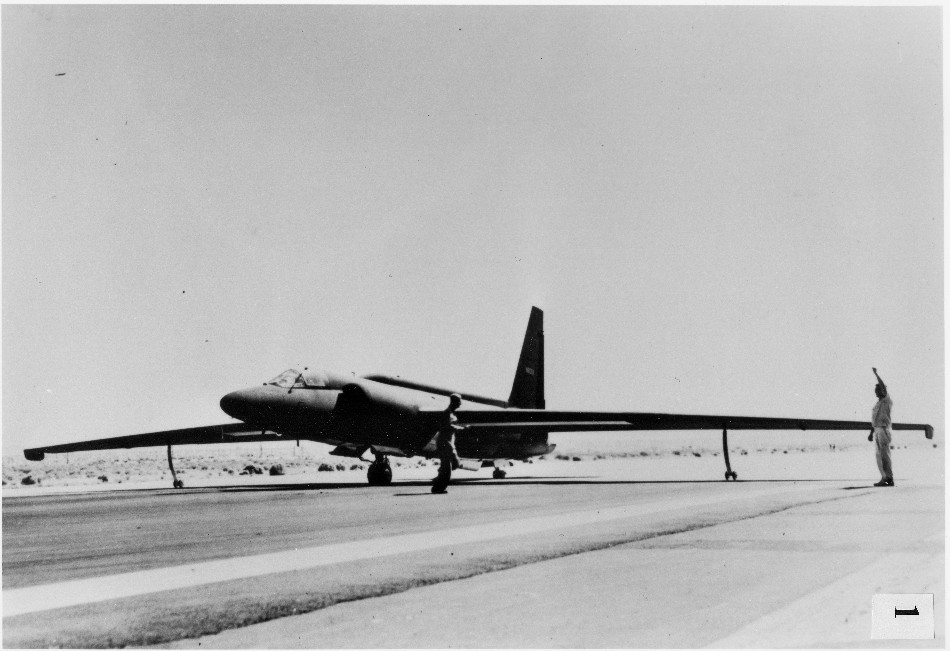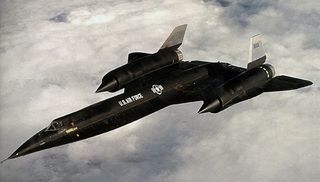
CIA About UFOs of the 1950s and '60s: 'It Was Us'

Many of the unidentified flying objects (UFOs) spotted by people in the middle of the last century were actually high-flying spy planes, officials from the U.S. Central Intelligence Agency say.
On Dec. 29, CIA officials said the following via Twitter: "#1 most read on our #Bestof2014list: Reports of unusual activity in the skies in the '50s? It was us."Attached to the tweet was a PDF of "The CIA and the U-2 Program, 1954-1974," a report about the United States' manned U-2 spy plane written by agency historians and published in 1998.
That document notes that "high-altitude testing of the U-2 soon led to an unexpected side effect — a tremendous increase in reports of unidentified flying objects (UFOs)." [Where to Spot 'UFOs' (Infographic)]
In the mid-1950s, most commercial airliners flew at altitudes between 10,000 and 20,000 feet (3,048 to 6,096 meters). But once U-2s started flying at much higher altitudes — above 60,000 feet (18,288 m) — "air traffic controllers began receiving increasing numbers of UFO reports," the report explains.

Airline pilots also wrote letters to the Air Force Unit at Wright Air Development Command in Dayton, Ohio, a group charged with investigating UFO phenomena.
"This, in turn, led to the Air Force's Operation Blue Book. Based at Wright-Patterson, the operation collected all reports of UFO sightings," the document states.
Blue Book officials regularly called on the CIA to help investigators eliminate the majority of UFO reports, the document explains, "although they could not reveal to the letter writers the true cause of the UFO sightings."
Get the Space.com Newsletter
Breaking space news, the latest updates on rocket launches, skywatching events and more!
Claims court
The CIA tweet has sparked its own UFO flap: Several analysts dispute the CIA assertion that U-2 flights really caused upward of half of UFO sightings.
"One thing this CIA UFO claim has accomplished: It has united UFO skeptics and proponents in proclaiming it untrue," Robert Sheaffer, author and well-known UFO cynic, wrote in a blog post last week. "We might agree on little else, except that this claim is nonsense."
Sheaffer explains that the Project Blue Book files are now public records, allowing anyone to verify when and where sightings were reported.
"The bottom line is: There is absolutely no correlation between the times and places of UFO reports and U-2 flights," he wrote.
Blue book look
A similar view about the CIA assertion is held by UFO photo analyst Bruce Maccabee, who analyzed the data and concluded that the CIA's explanation is "preposterous."
The statistics "do not bear out the claim that there was a large increase in sightings by any segment of the population, pilots and air traffic controllers included, once the U-2 aircraft started flying," Maccabee wrote in a recent blog post.
Sheaffer also argues that the CIA's claim that the U-2 flights led to the creation of Project Blue Book does not hold water, "because Blue Book predates the U-2 flights by several years. Other Air Force projects to investigate 'flying saucer' sightings were created several years earlier still."
The U-2 is still flying all these years later, despite advances in robotic aircraft technology that have led to the deployment of surveillance drones such as the United States' Global Hawk.
Leonard David has been reporting on the space industry for more than five decades. He is former director of research for the National Commission on Space and is co-author of Buzz Aldrin's 2013 book, "Mission to Mars — My Vision for Space Exploration," published by National Geographic with a new updated paperback version to be released this May. Follow us @Spacedotcom, Facebook or Google+. Originally published on Space.com.
Join our Space Forums to keep talking space on the latest missions, night sky and more! And if you have a news tip, correction or comment, let us know at: community@space.com.

Leonard David is an award-winning space journalist who has been reporting on space activities for more than 50 years. Currently writing as Space.com's Space Insider Columnist among his other projects, Leonard has authored numerous books on space exploration, Mars missions and more, with his latest being "Moon Rush: The New Space Race" published in 2019 by National Geographic. He also wrote "Mars: Our Future on the Red Planet" released in 2016 by National Geographic. Leonard has served as a correspondent for SpaceNews, Scientific American and Aerospace America for the AIAA. He has received many awards, including the first Ordway Award for Sustained Excellence in Spaceflight History in 2015 at the AAS Wernher von Braun Memorial Symposium. You can find out Leonard's latest project at his website and on Twitter.